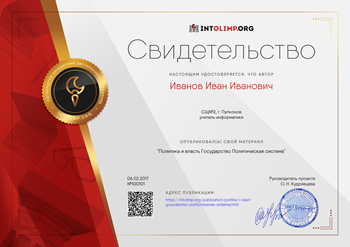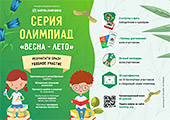Lesson plan
| Long-term planUnit 2: Living things | School: Junior secondry school 16 | ||||||
| Date: | Teacher name:ZarinaAkhmetova | ||||||
| Grade: 5 | Numberpresent:
| Absent: | |||||
| Theme of the lesson: | Living things/Non-living things
| ||||||
| Learning objectives(s) | 5.L9recognise short basic words that are spelt out 5.R2 Understand with little support specific information in curricular topics 5.W3 write with considerable support short sentences 5.C6organise and present information clearly to others 5.UE1 use appropriate countable and uncountable nouns | ||||||
| Lesson objectives
| All learners will be able to: use topic vocabulary Most learners will be able to: understand with the support the main points of extended talk on a range of general and curricular topics; evaluate how well they can listen to, say and read a text; identify and apply countable and uncountable nouns Some learners will be able to making their own opinions and be able to express them; organise and present information clearly to others | ||||||
| Success criteria | By the end of the lesson (5.L9, 5.W3, 5.C6, 5.UE) students will be use topic vocabulary, write short sentences and use countable and uncountable nouns in the sentences correctly | ||||||
| Value links | Respect and following the directions and instructions Education throughout life | ||||||
| Cross curricular links | Biology, Natural science | ||||||
| ICT skills | Using presentation | ||||||
| Previous learning | Home and away | ||||||
| Plan | |||||||
| Planned timings | Planned activities | Resources | |||||
| Beginning
8min
| Learners are introduced LO. 1.Warm up. “What was our topic in the last lesson?” It was “Home and away” - Look, these are pictures that are related to our past theme!!! And now you should read the text and write the words.
A Famous House: The White House The White House in Washington D.C., USA, is a very famous house. This house is not small. In fact, it is huge. It has 132 rooms The White House has six floors and three lifts.There are 35 412
The students assess each other | Flashcards (Rooms, furnitures)
| |||||
| Middle
8min
3 min
7 min
5 min
8 min
| Look at the picture and guess “What is the name of our topic?” “Living things” What do you think this means? At first I want to give some key words. Please listen and repeat after me A skateboard, a goldfish, a guitar, a cap, a dog, a gloves, a snake, a helmet, a digital camera,a watch, a comic book, a tortoise, a trainers, a flowers, a basketball, a scarf, a cat.
Look at the pictures. Which are living things? Which are non-living things?
a dog a goldfish a cap
gloves a snake a watch
a comic book a digital camera a tortoise
trainers flowers a basketball
a scarf a cat
Please, look at the pictures and complete the sentence. What have you got? This is the individual work. I have got (a)…….. I haven’t got………
Break activity
Read the text and complete the chart with the main ideas. This is the work in pair. LIVING THINGS AND NON-LIVING THINGS In nature we can find living things and non-living things. Rocks, air and wind are non-living things People, animals and plants are living things. The main characteristics of living things are: - They are born. All living things are born from another living thing. - They eat. All living things need food to eat. - They grow. All living things increase in size during their lifetime. Sometimes they change in appearance. - They react. Living things can perceive what is going on around them, and they react to what they perceive. - They reproduce. Living things can create offspring similar to themselves. - They die. Living things stop functioning and cease to live.
In nature we can find as such as such ___________________ ___________________ ___________________ ___________________
Complete the crossword “Living/ Non-living things”
Practice Fill the gaps with the correct form of the nouns (singular or plural). 1. People grow (tomato) ______________ in Kazakhstan. 2. You can put (sugar) ______________ in your breakfast tea. 3. We have to buy new (furniture) ______________ for our summer garden. 4. I need to wash my (hair) ______________. 5. We had a lot of (flower) ______________ this summer. 6. The Milfords have a lot of (money) ______________. 7. How many (people) ____________ were at the cinema with you? | Pictures Exel Ex.1, p.20 Exel Ex.2,p. 21
(cards) Exel Ex.4, p.20 A collection of Formative Assessment G5 ‘Living things’ Exel Workbook A collection of Formative Assessment G5 ‘Living things’ | |||||
| End 5 min | Learners give feedback to each other.This might be done in oral form. Learners reflect on their learning: 1. What has been learned? Home Task: revision |
| |||||
| Additional information | |||||||
| Differentiation – how do you plan to give more support? How do you plan to challenge the more able learners? Support for weaker students: working in pairs/groups, phrases Challenges for moreable students: Encouraged to do more writing; assist weaker students. Pair work, group work | Assessment – how are you planning to check learners’ learning? Checking the task Feedback on the work Monitoring | Health and safety check | |||||
|
Reflection
Were the lesson objectives/learning objectives realistic? Did all learners achieve the LO? If not, why? Did my planned differentiation work well? Did I stick to timings? What changes did I make from my plan and why?
|
The LO were realistic. Learners coped with the set tasks.
| ||||||
| I guess that differentiation worked well, I’ll use at all the aspects(where it’s appropriate)
| |||||||
| Summary evaluation
What two things went really well (consider both teaching and learning)?
What two things would have improved the lesson (consider both teaching and learning)?
What have I learned from this lesson about the class orachievements/difficulties of individuals that will inform my next lesson? | |||||||
5



























